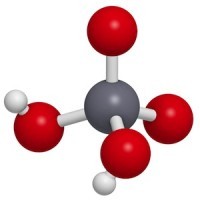
If you remember, in the movie Erin Brockovich, chromium hexavalent is the dangerous chemical compound that Ms. Brockovich helped to eradicate from Hinkley, California’s water supply. Why did she pursue the fight? Because chromium hexavalent is extremely toxic and dangerous.
What is Chromium Hexavalent?
Chromium hexavalent comes from the chemical element chromium, which is a hard, silvery metal. In one form, chromium is actually good for people in very small amounts. It makes insulin work better and helps our metabolism. [1] [2]
However, during manufacturing processes, chromium can become chromium hexavalent, which is extremely dangerous for people. [3] In fact, according to the National Institute for Occupational Safety and Health (NIOSH), all chromium hexavalent compounds are occupational carcinogens. [4] Worse, when the Agency for Toxic Substances and Disease Registry listed the top 275 most toxic substances found at Superfund sites, chromium hexavalent was ranked 16. [5]
Chromium Hexavalent Exposure
Although chromium hexavalent is dangerous and toxic, it’s useful in industrial applications. Workers involved in electroplating, photography, pyrotechnics, plastics, paints and primers, textiles, leather tanning, and wood preservation industries are at high risk of exposure. Welders may also be at risk since chromium hexavalent is often a by-product of heating chromium metal and welding stainless steel. [4] [6] [7] Avoiding these industries and environments will not guarantee exposure avoidance. Poor disposal practices in industrialized manufacturing have also put millions of others in danger because the compound leaches into drinking water.
Simply touching the compound won’t lead to most of the worst side effects, but it can be extremely dangerous if your infected hands come into contact with your mouth. And people who work with pressure-treated wood and other industries that produce contaminated fumes not only have to worry about touching the metal, but breathing it in. [5]
Harmful Effects of Chromium Hexavalent Exposure
Chromium hexavalent is a carcinogen that attacks your lungs when inhaled and has been connected to sinus, nasal, and lung cancer. [4] [8] Exposure has been linked to immunity disorders, neuropsychiatric disorders, atherosclerosis, neurodegenerative disorders, congenital disorders, DNA damage, and disruption of bodily processes. [7] In Russia, exposure to chromium hexavalent is widely blamed for premature senility.
Chromate dusts and acids can permanently damage your eyes if they come into direct contact, and other kinds of skin contact may lead to allergic dermatitis, corrosion, skin irritation, sensitization, and even ulcers. [6] [7]
Interestingly, chromium hexavalent is extremely reactive with vitamin C. When exposure is coupled with vitamin C in the body, it can result in severe damage to DNA inside the lung's cells. However, outside of the cells, vitamin C actually serves to protect against the damage to the cells.
Mitigating Exposure to Chromium Hexavalent
All of this brings us to the big question: how do we protect ourselves?
As far as industry is concerned, OSHA and NIOSH have both published books and pamphlets to help educate employers about the dangers of exposure to chromium hexavalent, exposure guidelines have also been created. Avoiding exposure will depend on the environment, but a few of the precautions include mandating protective equipment, substitution, elimination, administrative controls, and engineering controls. [4] [6]
The cat is out of the bag, and chromium hexavalent has already contaminated groundwater and soil, exposing ordinary citizens to its horrid effects. It's time to stop excusing the use of these dangerous chemicals as part of doing business. Until then, disposal methods that don’t allow chromium hexavalent to reach landfills must be implemented. In some cases, that means recycling; for others, it may mean incineration (horrible idea). No matter what is done, though, it has to be handled carefully to avoid causing further concerns. [5]
References (8)
- Mertz W. Chromium in human nutrition: a review. J Nutr. 1993 Apr;123(4):626-33. Review.
- Mertz W. Interaction of chromium with insulin: a progress report. Nutr Rev. 1998 Jun;56(6):174-7. Review.
- Gerd Anger, Jost Halstenberg, Klaus Hochgeschwender, Christoph Scherhag, Ulrich Korallus, Herbert Knopf, Peter Schmidt, Manfred Ohlinger. Chromium compounds. Ullmann's Encyclopedia of Industrial Chemistry. 2000 June 15. DOI: 10.1002/14356007.a07_067.
- Centers for Disease Control and Prevention. Hexavalent chromium. Workplace Safety & Health Topics.
- Fields S. Caution--children at play: how dangerous is CCA? Environ Health Perspect. 2001 Jun;109(6):A262-9.
- Occupational Safety & Health Administration. Hexavalent chromium.
- Arita, Adriana, and Costa, Max. Epigenetics in metal carcinogenesis: Nickel, Arsenic, Chromium and Cadmium. Metallomics: integrated biometal science. 2009. 1:222-228. doi: 10.1039/b903049b.
- Veys CA. ABC of work related disorders. Occupational cancers. BMJ. 1996 Sep 7;313(7057):615-9. Review.
†Results may vary. Information and statements made are for education purposes and are not intended to replace the advice of your doctor. If you have a severe medical condition or health concern, see your physician.







